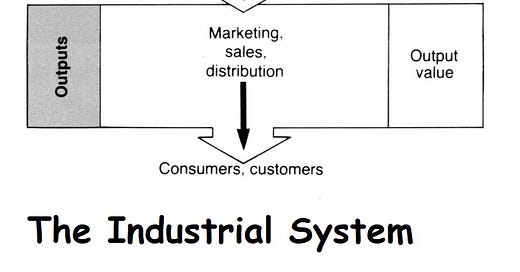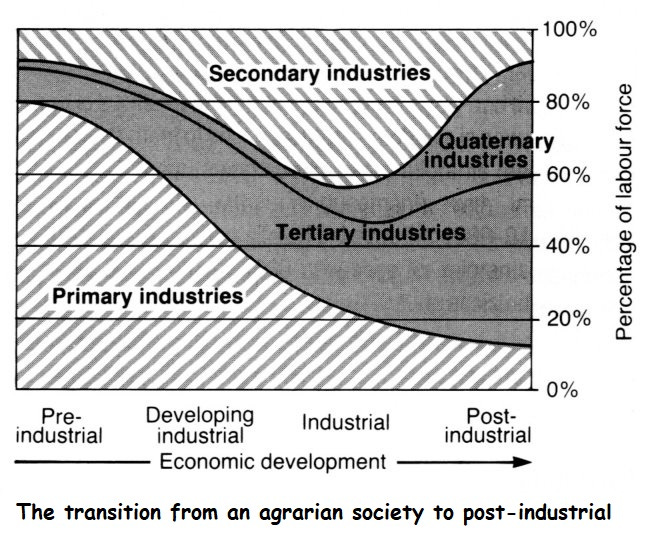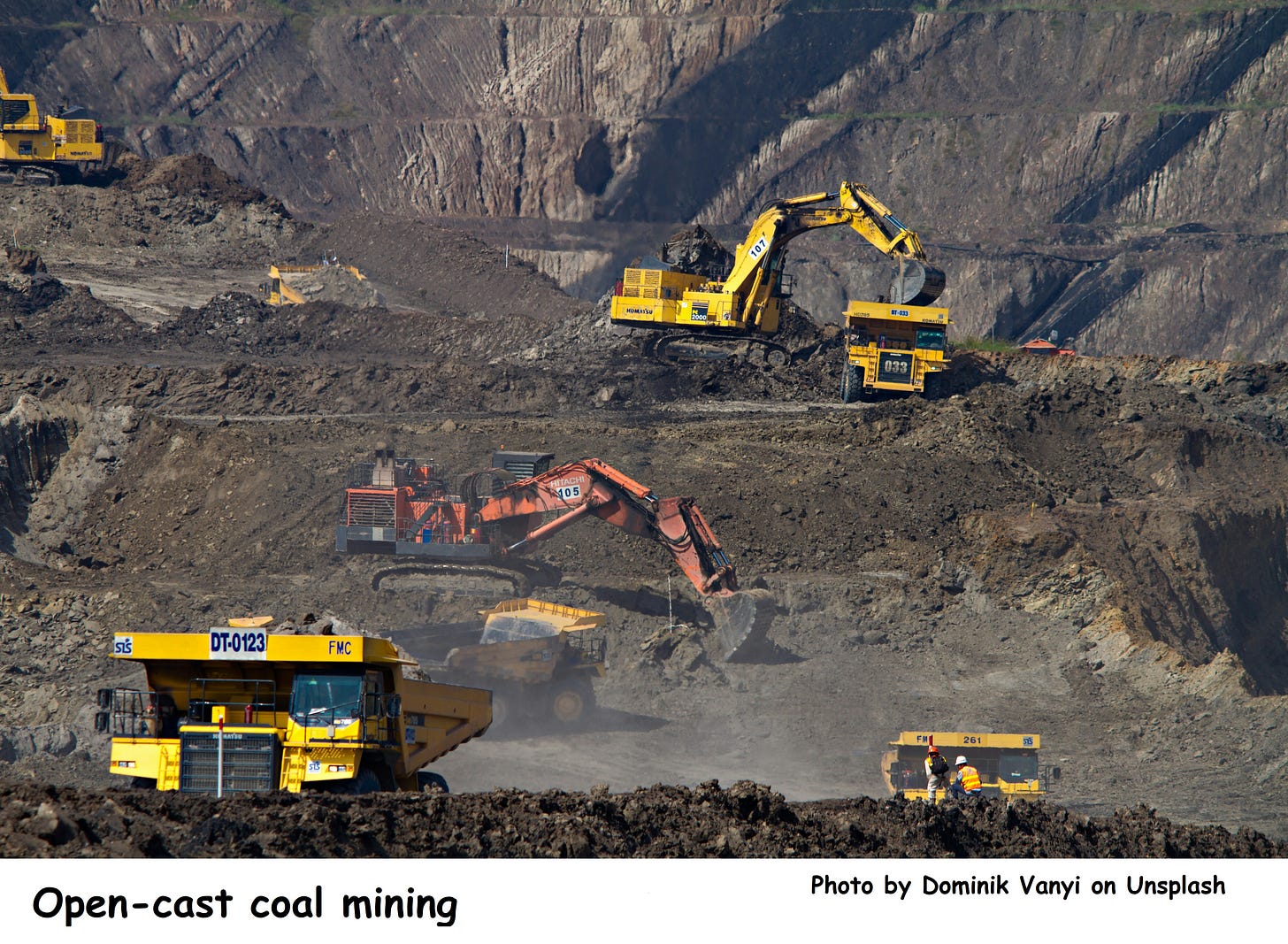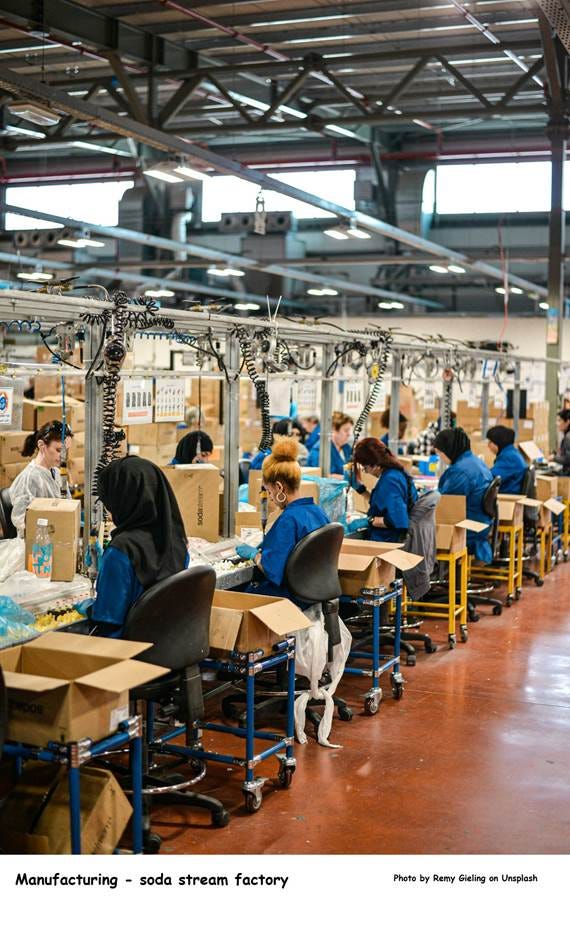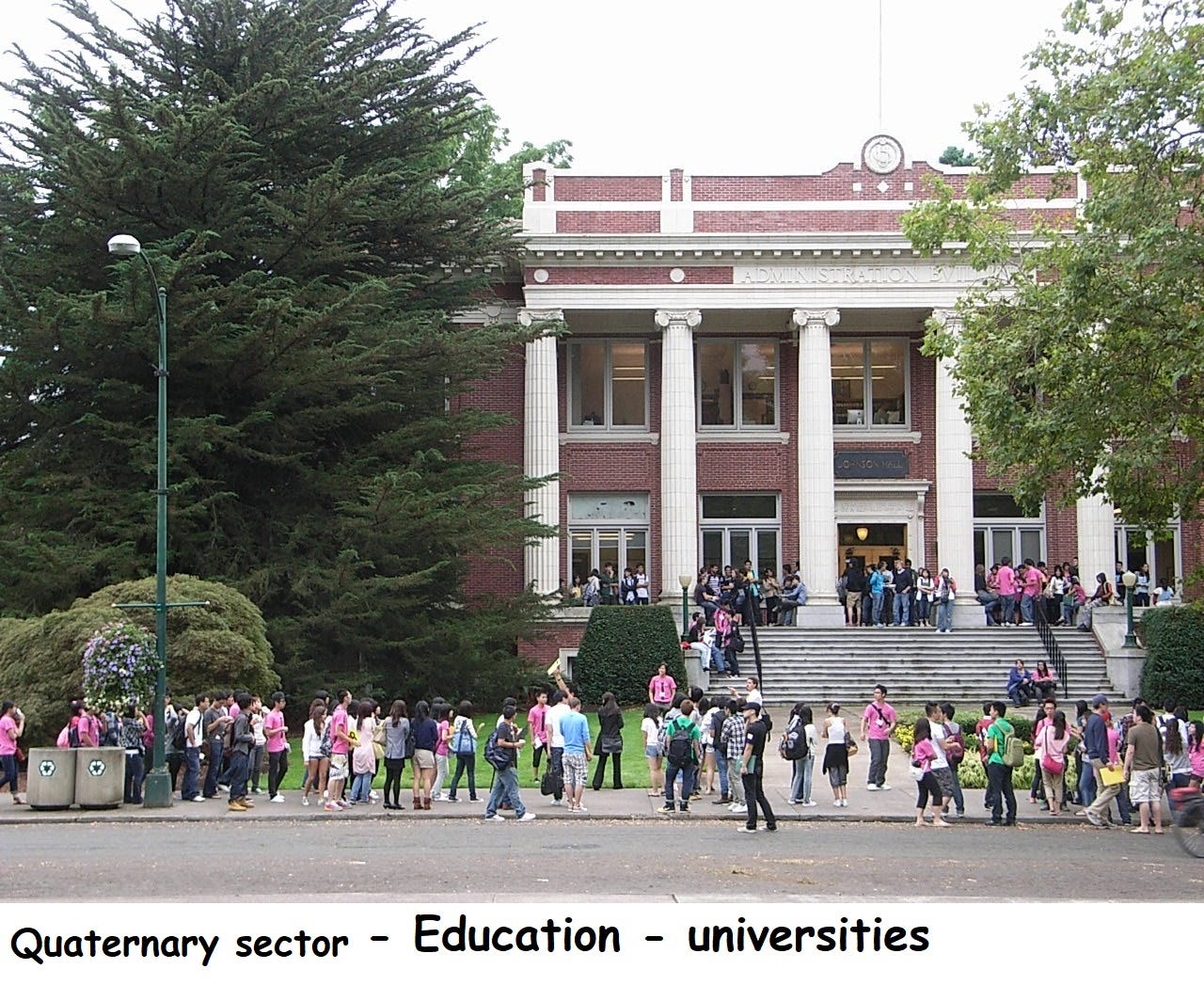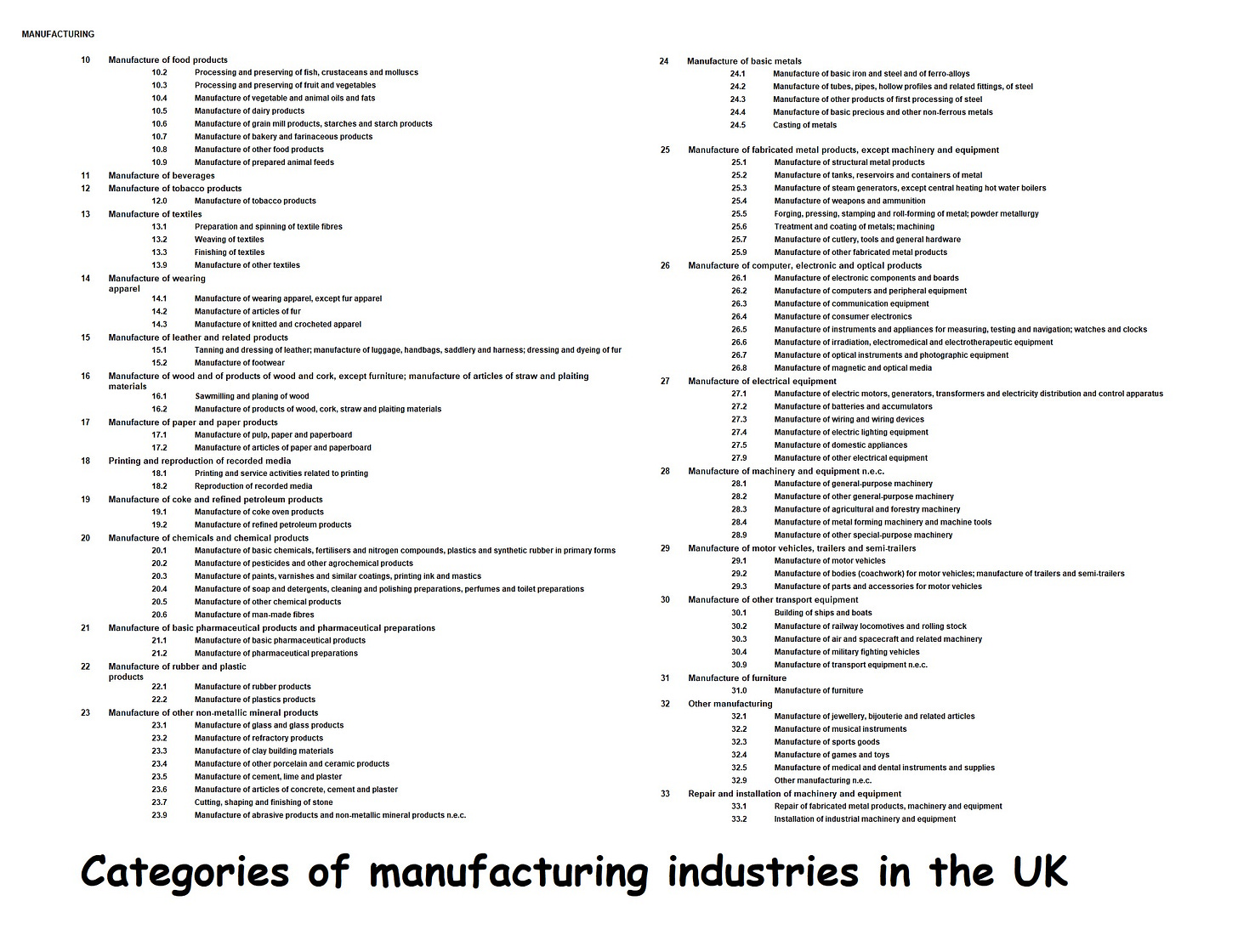Chapter One - The Industrial System
The industrial system refers to the complex network of economic activities and processes involved in the production, distribution, and consumption of goods and services on a large scale. It encompasses various sectors, such as manufacturing, mining, energy production, transportation, and infrastructure, which work together to facilitate economic growth and development. At its core, the industrial system involves the conversion of raw materials into finished products through a series of interconnected activities. This process typically begins with extracting or sourcing raw materials, such as minerals, metals, or agricultural products, from natural resources or primary producers.
Once the raw materials are obtained, they undergo processing and transformation within the manufacturing sector. This involves using machinery, equipment, and labour to convert the raw materials into intermediate or final goods. Manufacturing processes can be highly specialised and include activities like assembly, fabrication, refining, and packaging.
Following the manufacturing phase, the industrial system encompasses logistics and distribution. This involves the movement of goods from production facilities to various distribution channels, such as wholesalers, retailers, or directly to consumers. Transportation plays a vital role in this phase, with a wide range of modes including trucks, ships, trains, and aeroplanes being utilised to move goods efficiently across domestic and international markets.
The industrial system also relies on supportive infrastructure, including power generation, telecommunications networks, and transportation infrastructure, to facilitate the smooth functioning of production and distribution processes. Energy production and distribution systems ensure a reliable power supply for factories, while telecommunication networks enable information exchange and coordination between different actors within the industrial system. In addition to physical infrastructure, the industrial system is heavily influenced by economic, political, and social factors. Government policies, regulations, and trade agreements can shape the overall structure and operation of the industrial system, influencing factors such as labour practices, environmental standards, and market competition.
The industrial system has undergone significant transformations over time. The First Industrial Revolution, which began in the late 18th century, marked the transition from manual labour to mechanised production, powered by steam engines. Subsequent industrial revolutions introduced new technologies, such as electricity, mass production, and automation, leading to increased productivity and the emergence of global supply chains.
Today, the industrial system continues to evolve with the advent of digital technologies, the internet, and automation. Concepts like Industry 4.0 and the Internet of Things (IoT) are shaping a new era of smart factories and interconnected systems, where machines, processes, and data are integrated to optimize production and enhance efficiency.
Overall, the industrial system represents a comprehensive framework that encompasses the various interconnected activities, sectors, and processes involved in large-scale production and distribution. It serves as a foundation for economic growth, technological advancement, and societal development.
The main types of industry
In its widest sense, industry is work performed for economic gain. For the purposes of geographic study industry is usually classified into five main groups based on the nature of their economic activities and the products or services they provide. These are the key classifications:
Primary Industry: This type of industry involves the extraction and production of raw
materials from natural resources. It includes activities such as agriculture, forestry,
fishing, mining, and oil extraction. Primary industries are directly involved in obtaining natural resources, often as the initial stage of the production process.
Secondary Industry: Secondary industries are involved in the processing and
transformation of raw materials into finished or intermediate goods. They take inputs from primary industries and convert them into usable products. Examples include
manufacturing industries such as automobile production, textile manufacturing, steel
production, and food processing. Secondary industries add value to raw materials
through various manufacturing processes.
Tertiary Industry: Tertiary industries are also known as the service sector. They provide services rather than tangible goods. This sector includes activities such as transportation, retail, hospitality, banking, education, healthcare, tourism, and professional services like consulting and legal services. Tertiary industries support the production and distribution of goods, as well as fulfil various other needs of individuals and businesses.
Quaternary Industry: The quaternary industry involves intellectual activities focused on knowledge creation, management, and information processing. It includes research and development, information technology, data analysis, consulting, education, and other knowledge-based services. The Quaternary sector is an improved form of tertiary sector as it involves the services related to the knowledge sector, which includes the demand for the information- based. The services involved in this type of economy are outsourced in varied forms as the doctor’ services, elementary schools and university classrooms, theatres, and brokerage firms. It also includes intellectual activities and services as research and development (R&D), media, culture, and information and communications technology (ICT). The workforce who is readily involved in this sector is typically well-educated, and people are often seen earning well through their participation in this industry. Quaternary industries are involved in innovation, technology advancement, and the dissemination of knowledge.
Quinary Industry: The quinary industry consists of high-level decision-making and leadership roles in various sectors. It includes top-level executives, government officials, policymakers, and key personnel responsible for strategic planning, governance, and administration. Quinary industries influence and shape the direction of industries and economies through their decision-making and leadership.
It’s worth noting that these classifications are not always mutually exclusive, and many industries can have elements of multiple categories. For example, a company involved in manufacturing (secondary industry) may also provide services related to maintenance and support (tertiary industry). Additionally, the boundaries between industries can become blurred as technology advances and new sectors emerge. These classifications help in understanding the different types of economic activities and the specific roles each sector plays in the overall economy. They provide a framework for analysing industry trends, developing policies, and understanding the interdependencies between sectors within a country or globally.
Sectors of industry
The industry is typically broken down into sectors to categorise and analyse different types of economic activities based on their characteristics, functions, and interrelationships. Breaking down the industrial sector into sectors provides a structured framework for understanding and studying the diverse range of economic activities within it.
Some reasons why this breakdown is useful:
Classification and Organisation: Sectoral breakdown allows for the systematic classification and organisation of economic activities. It helps in grouping related industries together based on similarities in their production processes, inputs, outputs, and market dynamics. This classification enables researchers, policymakers, and analysts to study and compare industries within the same sector and identify patterns, trends, and specific challenges or opportunities.
Policy Formulation and Analysis: Sectoral breakdown facilitates policy formulation and analysis. Governments and policymakers can design targeted policies and measures specific to each sector, considering their unique characteristics and requirements. Understanding the relative contributions and challenges of different sectors allows policymakers to allocate resources, provide support, and implement regulations effectively.
Economic Planning and Development: Sectoral breakdown assists in economic planning and development at regional, national, and international levels. It helps identify key sectors that drive economic growth, employment, and innovation. By understanding the composition and dynamics of different sectors, policymakers and planners can devise strategies to promote competitiveness, attract investment, and foster sustainable development.
Economic Performance Evaluation: Breaking down the industry into sectors allows for the evaluation of economic performance at both macro and micro levels. It helps measure and compare sector-specific indicators such as productivity, employment, exports, and value-added. By monitoring the performance of each sector, policymakers can assess the overall health of the economy and identify areas that require attention or support.
Analysing Interdependencies and Linkages: Sectoral breakdown enables the analysis of interdependencies and linkages among different sectors of the economy. It helps understand how changes or developments in one sector can impact other sectors, creating forward or backward linkages. This knowledge is valuable for assessing the ripple effects of policy decisions, identifying supply chain dynamics, and understanding the overall economic structure.
By breaking down the industry into sectors, economists, policymakers, and analysts gain a more nuanced understanding of the economy's composition, performance, and dynamics. This knowledge serves as a foundation for informed decision-making, strategic planning, and promoting sustainable economic development.
Typically industry is divided into several broad categories or sectors based on the types of economic activities and products involved. The classification of sectors can vary slightly depending on the specific country or context, but the following sectors are commonly recognised:
Manufacturing Sector: This sector involves the production of tangible goods through the transformation of raw materials or components. It includes activities such as assembly, fabrication, processing, and packaging. Examples of manufacturing industries include automotive, electronics, textiles, food processing, chemicals, and machinery.
Mining and Extraction Sector: This sector encompasses the extraction of natural resources from the earth. It includes activities such as mining for minerals, metals, and fossil fuels, as well as quarrying for stone and extracting other raw materials. Mining and extraction industries are crucial for the supply of raw materials to other sectors, including manufacturing and construction.
Energy Sector: This sector is responsible for the production, distribution, and supply of various forms of energy. It includes activities related to energy generation, such as fossil fuel extraction, power plant operations, renewable energy production (e.g., solar, wind, hydro), and the distribution of electricity, natural gas, and other forms of energy.
Construction Sector: The construction sector involves the development, building, and maintenance of physical structures, infrastructure, and real estate. It includes activities such as residential and commercial construction, civil engineering, architectural services, and infrastructure projects like roads, bridges, and utilities.
Transportation Sector: This sector is involved in the movement of goods and people from one location to another. It encompasses various modes of transportation, including road transport (trucks, cars), rail transport (trains), air transport (aeroplanes), water transport (ships, boats), and pipeline transportation. The transportation sector supports the logistics and distribution of goods across different industries.
Utilities Sector: The utilities sector comprises essential services that support industrial activities and daily life. It includes the provision of electricity, water supply, sanitation, and waste management services. Utilities are crucial for supporting industrial processes, ensuring a reliable power supply, and maintaining public health and environmental standards.
Information Technology (IT) Sector: The IT sector involves the development, management, and application of technology and information systems. It includes software development, hardware manufacturing, telecommunications, data management, IT consulting, and related services. The IT sector plays a critical role in enabling digital transformation, connectivity, and innovation across various industries.
Financial and Professional Services: This sector encompasses a wide range of services that support industrial activities, including banking, insurance, financial investments, accounting, legal services, consulting, and business management. These services facilitate financial transactions, risk management, legal compliance, and strategic decision-making within industrial enterprises.
It is important to note that these sectors are not mutually exclusive, and there can be significant overlap and interdependencies among them. For example, the manufacturing sector relies on the mining sector for raw material supply, the energy sector for power, and the transportation sector for the distribution of finished goods. Additionally, advancements in technology and digitalisation are increasingly blurring the boundaries between sectors as they become more interconnected.
Short Answer Questions (1–3 marks each)
Define the term industrial system.
Identify two examples of raw materials used in the industrial system.
What is meant by the term secondary industry?
Give one example each of a primary, secondary, and tertiary industry.
Name two modes of transport used in the distribution phase of the industrial system.
List any two roles of the quinary industry.
What does Industry 4.0 refer to?
Identify one advantage of breaking down industry into different sectors.
Structured Questions (4–8 marks each)
Explain the stages involved in the operation of the industrial system from raw materials to final distribution.
Compare and contrast the roles of the tertiary and quaternary sectors in the economy.
Discuss the importance of infrastructure (such as energy and communication) to the smooth functioning of the industrial system.
Outline the significance of the mining and energy sectors within the broader industrial system.
Describe how the transportation and utilities sectors support the manufacturing sector.
With reference to examples, explain how sectors of industry are interdependent.
Extended Response / Essay Questions (10–20 marks)
Discuss how technological advancements have transformed the industrial system from the First Industrial Revolution to the present day.
Evaluate the importance of classifying industry into primary, secondary, tertiary, quaternary, and quinary sectors for economic planning and policy-making.
"The success of an industrial system depends not only on physical resources but also on political and social factors." Discuss this statement with reference to examples.
Using examples, assess the impact of digital technologies (e.g., IoT and automation) on modern industrial systems.
Examine the roles played by each of the five main types of industry in the economic development of a country.
Analyse how sectoral breakdown helps in understanding the structure and performance of a country’s economy.


